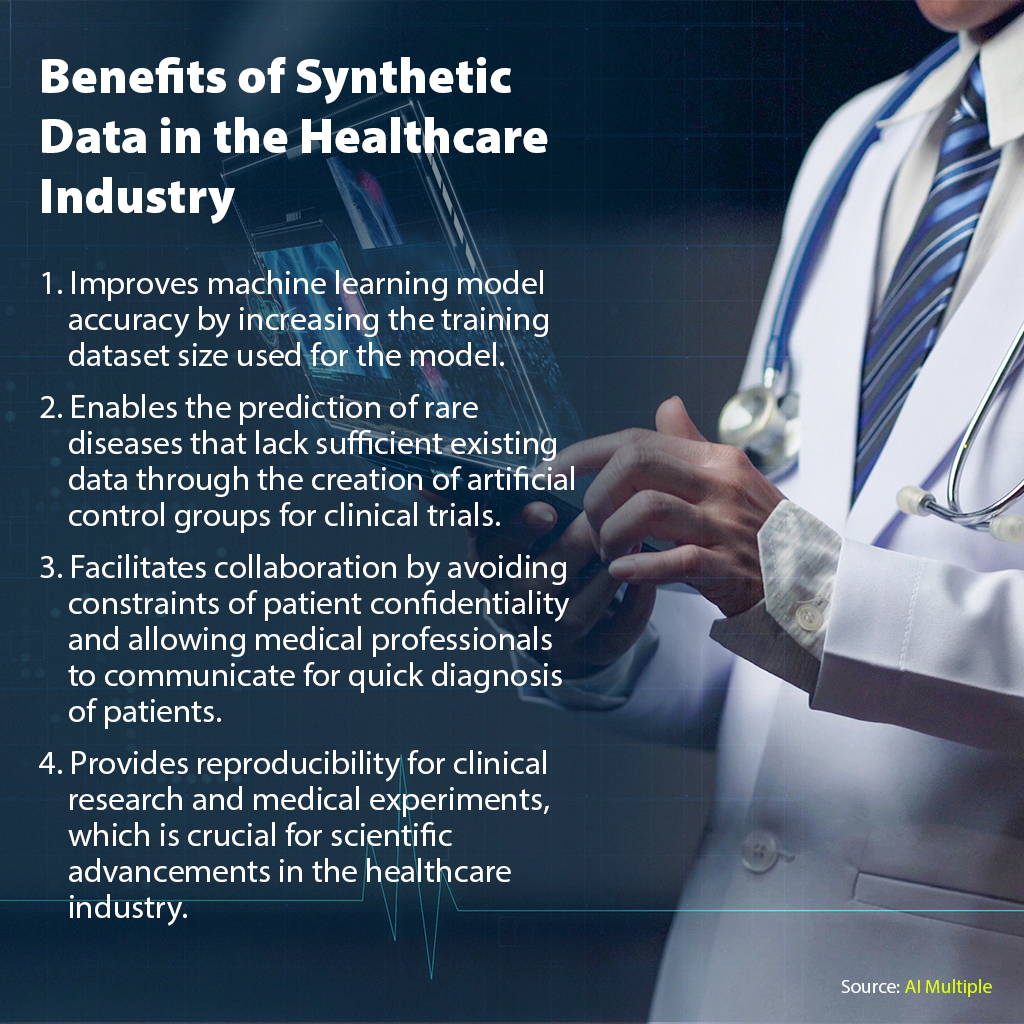<< Back to Media
Synthetic Data Boosts Medical Outcomes at the VHA
October 11, 2022
Data drives innovation, problem-solving, and decision-making in today’s world. Data can be an invaluable resource for all industries, but organizations must be able to collect, analyze, and share data safely and effectively to reap the benefits.
Artificial intelligence (AI) offers a competitive advantage for businesses, especially when processing and analyzing large amounts of data. Machine learning and deep learning models can be trained to learn from data and results with high accuracy. However, collecting sufficient data necessary to develop successful AI and machine learning models is not always feasible when researching rare events. This is especially true when the research involves sensitive customer data such as Personally Identifiable Information (PII) or Personal Health Information (PHI). In the healthcare industry, synthetic data may be the solution to overcome these challenges.
What is Synthetic Data?
Safely sharing patient data is essential for successful medical research and innovation in the healthcare industry. However, access to realistic patient data is often restricted due to patient privacy concerns, high costs, and a lack of existing data related to a health event. AI algorithms can generate synthetic data or artificial data designed to mimic actual data from real-world events. The manufactured data sets created by the algorithm essentially have the same characteristics as the original data and, therefore, the same predictive power. Synthetic data helps address the data limitations and accelerate medical research by developing realistic patient profiles and health outcomes while maintaining patient confidentiality. The ability to replicate patient medical histories, patterns, and disease trajectories is crucial when developing personalized medicines and treatments. Synthetic data enables healthcare providers to share data among internal and external teams. Teams that can collaborate freely and use synthetic data-driven diagnostics will be able to provide more effective patient care and see more tangible health outcomes.
Many healthcare applications use synthetic data models, including medical imaging, patient data analysis, and drug and vaccine discovery. The Veterans Health Administration (VHA) and the National Institute of Health (NIH) utilize synthetic data uniquely to boost medical outcomes.
Various Veterans Health Administration Innovation Ecosystem (VHA IE) initiatives incorporate synthetic data to analyze health risks to Veterans. The VHA IE recently partnered with MDClone to generate artificial data sets to improve patient health outcomes and track health trends involving suicide prevention and chronic disease management. In addition, the VHA created synthetic data models to predict COVID-19 events in Veteran populations. Predictive models like these improve clinical outcomes for Veterans while maintaining health data privacy and security.
The National Institute of Health is partnering with Syntegra, an IT services startup that uses an AI-enabled synthetic data engine, to validate the generation of a non-identifiable replica of the entire COVID-19 patient database. The database contains the personal data of over 2.7 million screened individuals and over 413,000 COVID-19-positive individuals. Syntegra’s synthetic data engine virtually replicates the patient dataset without compromising the patients’ personal information.
How WBD Is Helping
Washington Business Dynamics is proud to support our client, the VHA Innovation Ecosystem, with emerging healthcare solutions and technologies. At the VHA IE, our communication, healthcare, data analyst, and IT experts are redesigning healthcare to better meet the needs of our Veterans. We work with our government clients as partners to ensure data confidentiality as we employ data to enhance decision-making, boost innovation, and solve real-world problems.
Author: Hannah Lopez, Senior Associate at WBD, is an IT data analytics professional engaged with the Department of Homeland Security (DHS) and the Federal Emergency Management Agency (FEMA).
